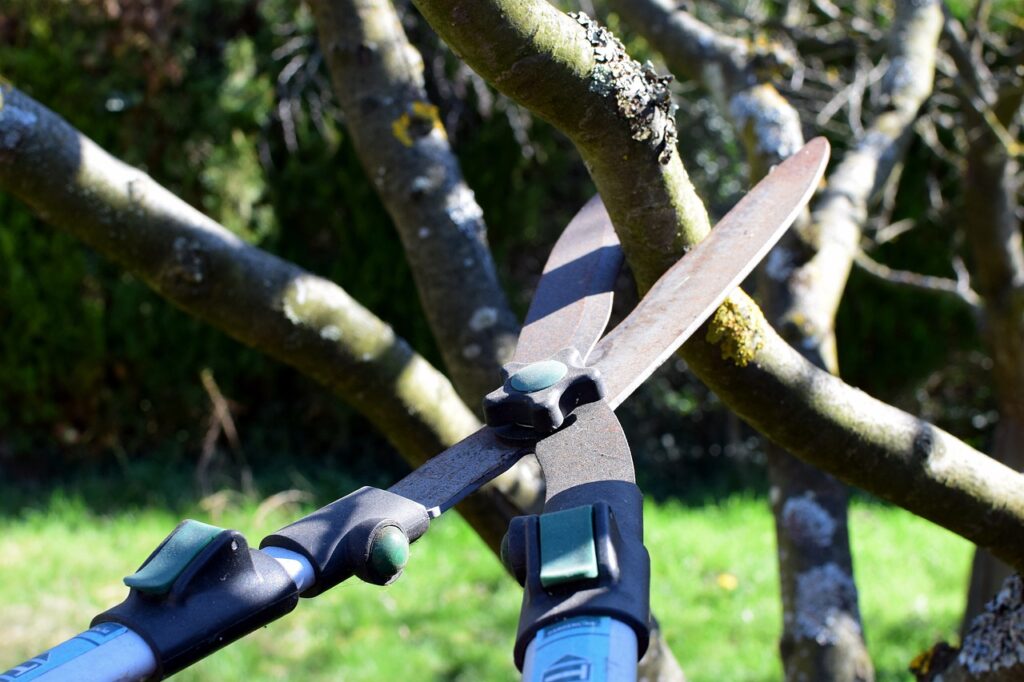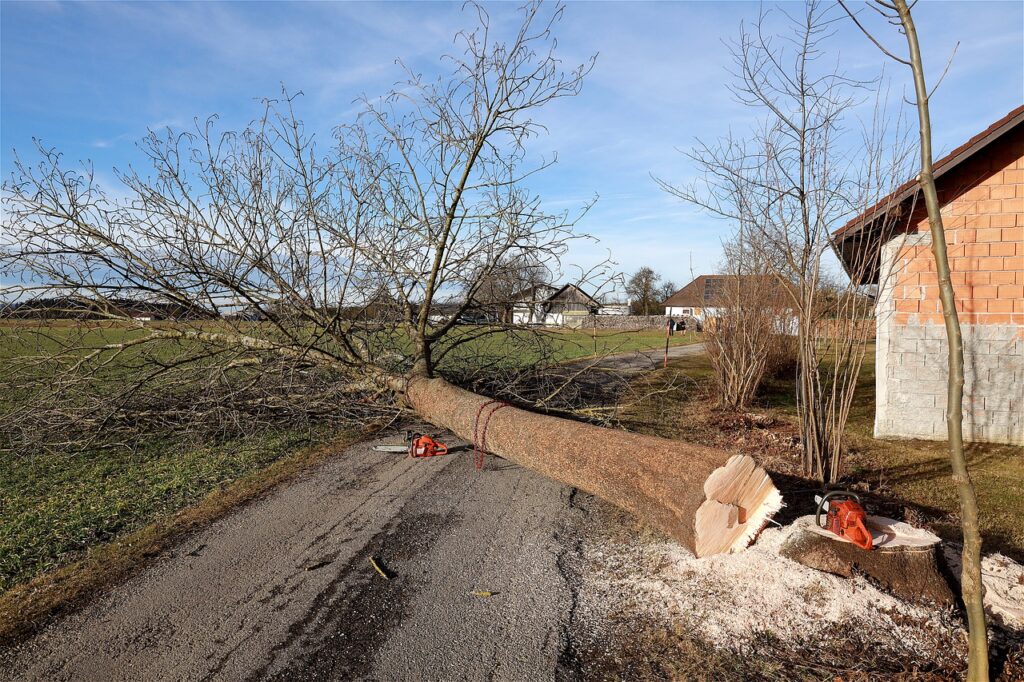Remembering that trees constitute a significant contributor to Earth's oxygen supply is crucial. They contribute to an increase in this gas's atmospheric concentration and a drop in CO2—the principal contributors to the glasshouse effect and, by extension, to the acceleration of global warming.
These two advantages alone are sufficient to justify tree maintenance. Nevertheless, its advantages extend much deeper than we typically acknowledge. In urban areas, where air pollution is more prevalent, trees play an especially vital role in cleaning the air. In reality, it's the most effective method for cleaning polluted air, which will have a direct impact on the well-being of humans and other creatures residing in densely treed metropolitan cores.
Similarly, trees in metropolitan areas shield us from scorching temperatures in the summer; they are the most effective means of mitigating the so-called stove effect, which occurs when concrete and asphalt structures absorb heat and expand, turning them into plates that radiate heat even at night. The presence of trees mitigates this impact by reducing the likelihood of heat islands and facilitating more consistent temperatures within a given area. Thus, it is critical that tangible activities be taken to aid in the preservation of existing trees and to enhance their presence in areas of urban and rural areas that have been deforested.
How To Save Stressed Trees: 7 Causes
Your property's trees are a valuable asset. They can shield you from the sun and heat, shield your home from the cold winter weather, hide your home from prying eyes, add visual appeal to your home, and boost its market value. It should come as no surprise that tree ownership is popular.
Trees may have remarkable resistance to stress, but they are not invincible. When a tree in a homeowner's yard shows symptoms of stress and dies, the loss is often met with sadness. Why do trees get stressed? Is there a tree stress therapy that can rescue our tree? These are typical concerns voiced by homeowners who are experiencing difficulties.
The homeowner's best intentions may be misguided, but they typically cause the tree stress that eventually kills the tree. The good news is that you may take precautions to protect your trees from this problem. The purpose of this post is to provide insight into the most prevalent factors that lead to tree stress and eventual mortality, as well as to offer some concrete advice on how to better care for your trees. We hope this will help you make more educated decisions that will lead to longer life spans for your trees.
What Stresses And Kills Trees?
There are a few telltale signs of a tree that's under stress. Some of the earliest warning signs of tree disease include stunted or absent growth, stains or spots on leaves, and a general loss of vitality. It is possible to protect the trees on your property from stress and death even if you can't see any obvious signs of trouble. In many cases, trees die as a result of a culmination of circumstances that have built up over time. Some of the most common causes of tree stress are as follows:
Incorrect Planting of Trees
It's a major reason why trees die. Choosing the wrong tree for the available soil and then placing it incorrectly might be major factors. The process is more involved than just digging a hole and filling it in. Before planting a new tree, find out what sort of soil it prefers and consult a professional to see if the soil in this area of your property satisfies the needs of the tree.
Even 15 years after planting, a tree that was planted too deep, too close to the road, in a highly moist environment, or with guide wires still wrapped around its trunk would likely be an eyesore and eventually be lost. The trees may experience rapid death, as well as noticeable colour changes, limited development, and possibly even death. Our tree planting guide has more information to help you get started with your tree planting project.
Incorrect Use of Mulch Near Trees
Even while mulching could seem like an easy task, if you apply it incorrectly around your trees, it could lead to significant tree stress indications in the future. Mulch should not be piled around tree trunks or piled higher than 2 inches above a tree's roots. Check the depth of the mulch around your tree by digging down to it. It may be necessary to remove some or all of the existing mulch if the buildup is considerable, especially before applying a new layer.
In a similar vein, mowing your lawn could harm your trees if you don't put mulch down first. Mulch is beneficial for trees of all kinds because it protects their roots from erosion and helps maintain moisture.
Poor Tree Watering Techniques
Over or under watering a tree will create the same indications of stress, including the yellowing and falling of leaves, and will ultimately kill the tree. Even while the first year after a tree is planted on your property is crucial, trees of any age are negatively impacted by drought and over irrigation. A mature tree may survive, but it may still show signs of stress like the ones listed above. Keep the soil around your trees moist, but not soaked. Water them thoroughly once a week.
Lawn-related Injuries That Can Hurt Trees
It's not a good idea to sod up to a tree's trunk. Mower damage, soil compaction, and decaying bark cuts from string trimmers are all possible results of this. A mulch layer should reach past the tips of the branches of evergreen trees as well, to protect the newly emerging buds from being crushed.
Stress symptoms, such as the leaves curling inward, can appear on trees that have been subjected to excessive amounts of weed control chemicals, especially those applied to the surface roots that are visible above ground. Always make sure your trees have enough room to grow.
Poor Tree Maintenance
If a tree is pruned improperly (at the incorrect time or using the wrong technique), it leaves itself vulnerable to diseases and insects. Pruning trees during their dormant season is generally recommended, though specifics should be discussed with a Certified Arborist. Pruning deciduous trees should never remove more than a third of the year's growth at once, while evergreens should not be over-manicured.
Trees Hurt During Construction
When plants aren't properly protected during home renovations, stress symptoms like branch dieback and even tree death might occur later on. The ground and roots of your trees and shrubs must be shielded from any potential damage that might be caused by moving vehicles or other heavy objects. Keeping a barrier in place under and around trees helps protect the soil from being overly compacted and can also prevent contamination from things like equipment fluids and cleaning agents.
Failure to Perform Routine Maintenance, Causing Tree Stress
For a good portion of their lives, your trees may be able to thrive with minimal care and without ever showing signs of tree stress. However, special care must be taken to protect certain types from certain insects. Most people mistakenly believe that as long as their trees remain quite healthy, they do not require any special attention. True, trees show signs of tree stress far later than, say, a lawn. It may be too late to save a tree if problems aren't addressed before visible tree stress symptoms appear.
Moreover, suburban soil is not the same as a naturally fertile forest bottom, making it difficult for trees to survive in these areas. This implies you need routinely apply natural ingredients like fertiliser to the soil under and around your trees to keep it healthy. Your tree will be better able to withstand the harsh conditions of a suburban environment if you do this.

Tips For Maintaining A Tree's Health And Vitality
- Put the proper tree in the proper soil. Find a site that gets adequate sun and has enough room for the tree to grow into its mature canopy before deciding on a tree that isn't suited to your area. Make sure you're not going to hit any pipes, wires, or septic tanks before you dig. Last but not least, don't bury it too deeply! Sadly, that is the most common error identified by our tree experts.
- Well-maintained watering system. Trees require regular watering just like any other plant. You should see if your tree needs watering if it hasn't rained in a while. Mature trees often require an inch of water once each week. In the first two growing seasons, a new tree will need between 4 and 10 gallons of water each week.
- Mulch. Mulch prevents soil drying out, insulates tree roots from cold temperatures, and shields them from lawn mower blades. It will be easier for your tree to get these benefits if you first remove the grass from under it and then put a layer of mulch of 2 to 4 inches. If you want to keep the trunk's base exposed, you'll need to be careful.
- Fertilize. Soil around trees in a forest is nourished by decaying plant matter. However, we often get rid of the natural fertilizers—leaves and grass clippings—from our yards by raking them up. It's a simple matter of applying fertiliser to the soil. To gradually introduce nutrients into the soil, use a slow-release fertiliser. In addition, you should routinely check for nutrient deficiencies by doing soil tests.
- Prune. By eliminating dead branches and strengthening the remaining framework, proper tree pruning is essential for healthy tree growth. When the tree is dormant, without leaves, is the best time to perform extensive trimming (if possible). Then, during the summer, you should give special attention to cleaning up and removing any small twigs that are dead or otherwise damaged.
- Prepare for exams by scheduling them. Planning to book your yearly physical? Schedule a visit for your tree as well! Early detection of pests or diseases can have a dramatic impact. ISA Certified Arborists® are trained to recognise warning signs, such as leaf discoloration, cankers, holes, and more. This is followed by a set of recommendations for how to assist the situation.
What We Get From Trees?
Certainly, trees are attractive, and most of us have probably appreciated a pleasant stroll through a wooded area. However, that is merely the beginning of the perks you'll reap from them. Like the best of friends or star employees, trees offer without expecting anything in return. Trees provide at least five important benefits, including those listed below.
Cost-Cutting Energy Measures
Did you realise that having trees in your yard might actually help you save money? Trees offer us a favour by preventing harsh winds from entering our homes during the colder months of the year, resulting in savings of up to 30% on heating bills. And during the warmer months, their shade will help keep your home at a comfortable temperature. Without that tree, you'd have to spend a lot more money on 10 room-sized air conditioners to have the same result.
Reduced Tax Burdens And Improved Flood Defences
Water runoff can cause flooding and property damage, proving that Mother Nature is a formidable foe. We can thank the trees again for being on our side. They act like a sponge, soaking up excess water before it may cause widespread flooding. The roots and organic matter of a forest slow the movement of water, causing it to sink slowly into the ground, which immediately minimises erosion and helps you keep your land and soil.
Improved Relative Worth of a Home
Visualise avenues flanked by verdant trees. Envision a country home with breathtaking views of the forest. Some potential buyers may be willing to spend a higher price for a home that features the aforementioned amenities. If you live near a stream or river, planting trees and bushes can help reduce the risk of soil erosion on your property, and trees can improve soil quality in rural areas.
Benefits to Health and Stress Levels
We know that spending time in nature has positive effects on health and well-being on both the mind and body. Shinrin-yoku, which literally means "forest bathing," is a Japanese phrase for spending time in natural settings. You don't even have to leave the house; studies show that just staring out a window at some greenery has a positive effect on mood and mental health.
Plants in general, including trees and shrubs, operate as natural filters, reducing the amount of harmful substances that reach us. Water pollution can be caused by harmful heavy metals, potassium, nitrogen, and phosphorus on our land surfaces, yet shrubs' roots are able to filter out these contaminants. Therefore, the riparian zone (land bordering water) is an ideal location for shrub planting.
Important Component of a Balanced Ecosystem
The presence of trees and shrubs increases the land's resilience to climate change by reducing runoff, retaining water, storing carbon, and reducing temperature extremes. All of these are advantages that forests and shrubs provide to the world around us. Ecological services, or the benefits we receive from trees, would be incredibly costly to engineer and do on our own.
Conclusion
In urban areas, where air pollution is more prevalent, trees play an especially vital role in cleaning the air. And they do a good job of counteracting the "stove effect," which occurs when concrete and asphalt buildings get too hot and expand into flat plates that give off heat. The shade of a tree can be welcome on a hot day, but even trees can feel the effects of stress. Slowed or no development, discoloration or patches on the leaves, and an overall lack of vigour are some of the initial symptoms of tree disease. Our goal in writing this piece is to shed light on the most common causes of tree stress and death.
Content Summary
- The importance of remembering that trees provide a major portion of the oxygen on Earth cannot be overstated cannot be overstated.
- They add to the rise of this gas in the atmosphere and the fall of CO2, two major drivers of the glasshouse effect and, by extension, of the quickening of global warming.
- Just these two benefits would make tree care worthwhile.
- Trees are very important in reducing air pollution in metropolitan settings.
- The health of people and other animals living in heavily forested urban centres will benefit directly from this strategy, as it is the most efficient approach for purifying contaminated air.
- Similarly, trees in urban areas protect us from the summer's sweltering heat by blocking off the sun's rays and preventing concrete and asphalt from expanding and turning into heat-radiating plates, a phenomenon known as the "stove effect."
- The presence of trees helps reduce the possibility of heat islands and promotes more uniform temperatures across a particular area, therefore mitigating this effect.
- For this reason, it is crucial to adopt concrete measures to aid in the conservation of existing trees and to increase their presence in once forested urban and rural regions.
- You can defend your trees from this threat, which is good news.
- This article's goal is to help you better care for your trees by illuminating the most common causes of tree stress and death and providing some actionable tips for doing so.
- Several symptoms can be observed in a tree that is experiencing stress.
- Even if there are no outward indications of stress or death, you can still take steps to protect the trees on your property.
FAQs About Importance of Trees
They increase property values, reduce air pollution and soil erosion, and provide habitat for wildlife. Plus they add beauty and a calming presence to our everyday lives. Since they are such a peaceful, serene part of the background, it's easy to forget that trees require our care to thrive.
Trees give off oxygen that we need to breathe. Trees reduce the amount of storm water runoff, which reduces erosion and pollution in our waterways and may reduce the effects of flooding. Many species of wildlife depend on trees for habitat. Trees provide food, protection, and homes for many birds and mammals.
- More oxygen in our air.
- More natural carbon sinks and reduced greenhouse gases.
- Natural habitats for endangered animal species.
- Dependable salaries and careers around the world.
- Healthier soil and natural humidity control.
A plantation is an agricultural estate, generally centered on a plantation house, meant for farming that specializes in cash crops, usually mainly planted with a single crop, with perhaps ancillary areas for vegetables for eating and so on.
The Tree Planting Activity aims to raise awareness to the society in the importance of planting and saving trees, express our concern to the environment, and diminish the unfavorable effects of climate change.


